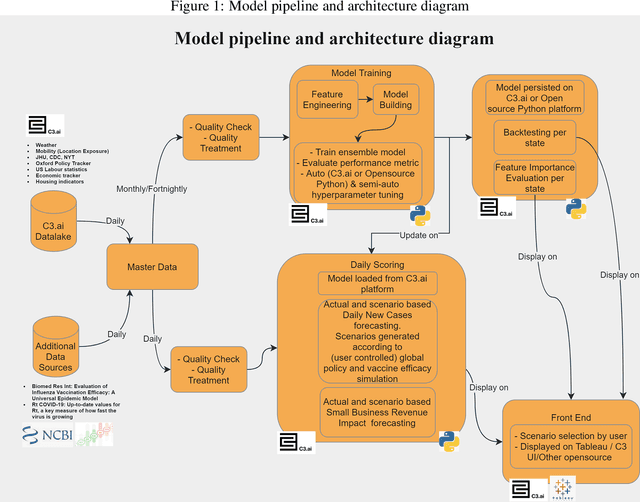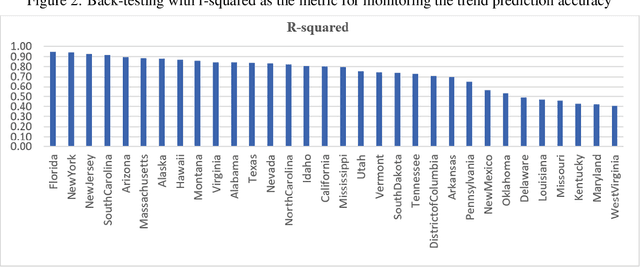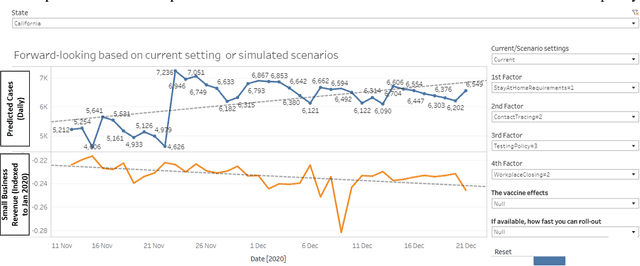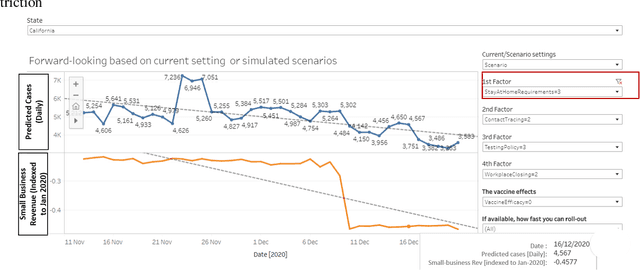Praveen Chougale
Impact of Interventional Policies Including Vaccine on Covid-19 Propagation and Socio-Economic Factors
Jan 11, 2021



Abstract:A novel coronavirus disease has emerged (later named COVID-19) and caused the world to enter a new reality, with many direct and indirect factors influencing it. Some are human-controllable (e.g. interventional policies, mobility and the vaccine); some are not (e.g. the weather). We have sought to test how a change in these human-controllable factors might influence two measures: the number of daily cases against economic impact. If applied at the right level and with up-to-date data to measure, policymakers would be able to make targeted interventions and measure their cost. This study aims to provide a predictive analytics framework to model, predict and simulate COVID-19 propagation and the socio-economic impact of interventions intended to reduce the spread of the disease such as policy and/or vaccine. It allows policymakers, government representatives and business leaders to make better-informed decisions about the potential effect of various interventions with forward-looking views via scenario planning. We have leveraged a recently launched open-source COVID-19 big data platform and used published research to find potentially relevant variables (features) and leveraged in-depth data quality checks and analytics for feature selection and predictions. An advanced machine learning pipeline has been developed armed with a self-evolving model, deployed on a modern machine learning architecture. It has high accuracy for trend prediction (back-tested with r-squared) and is augmented with interpretability for deeper insights.
 Add to Chrome
Add to Chrome Add to Firefox
Add to Firefox Add to Edge
Add to Edge